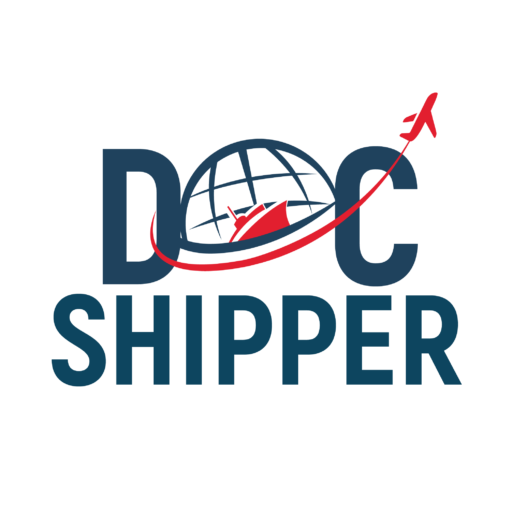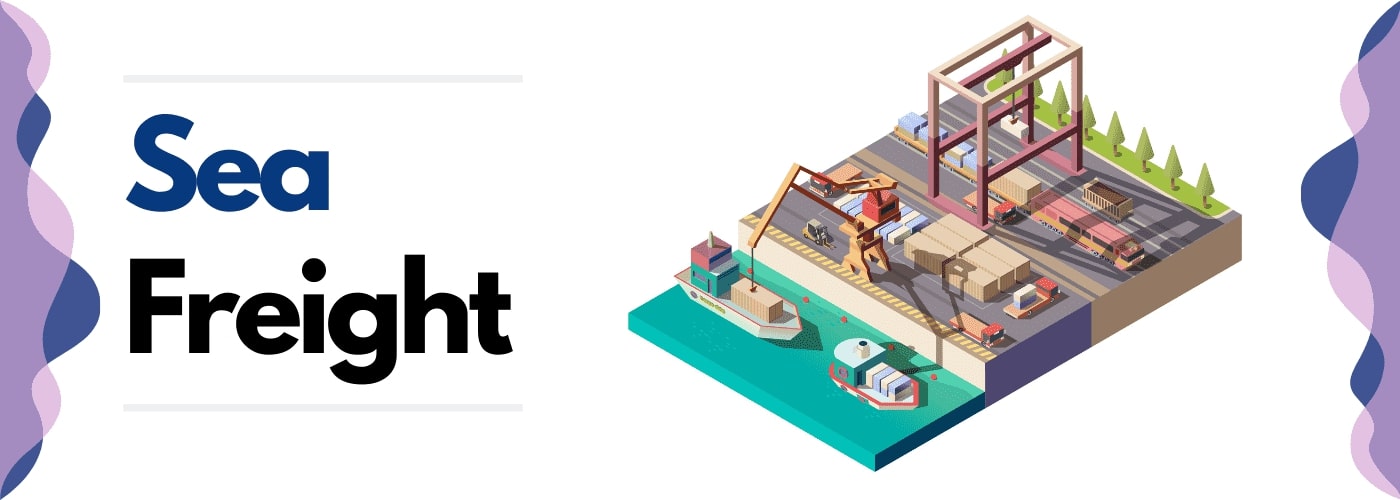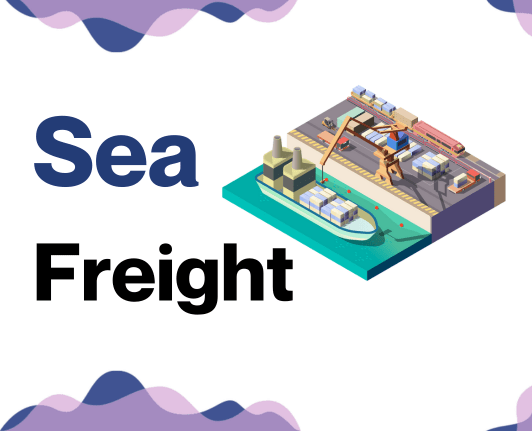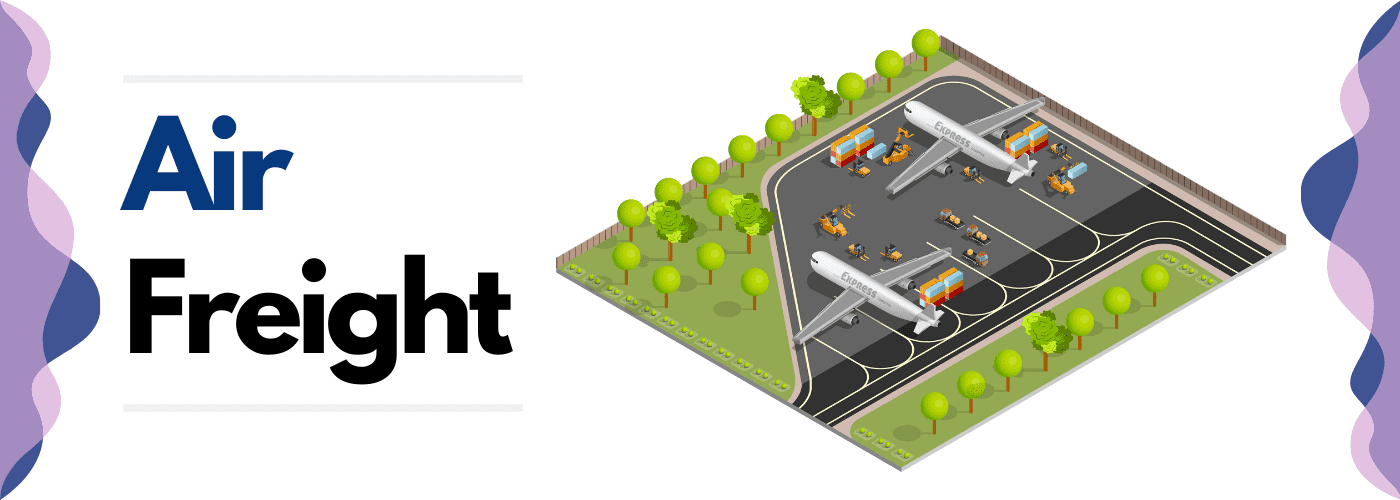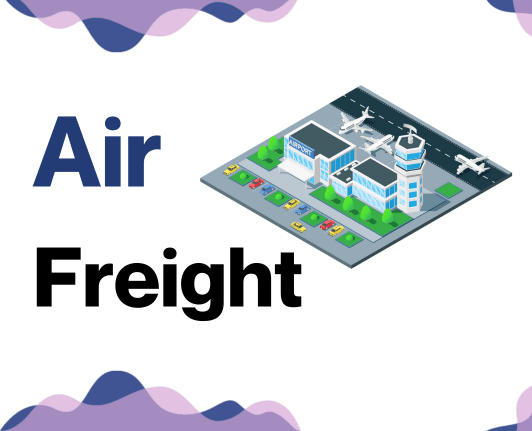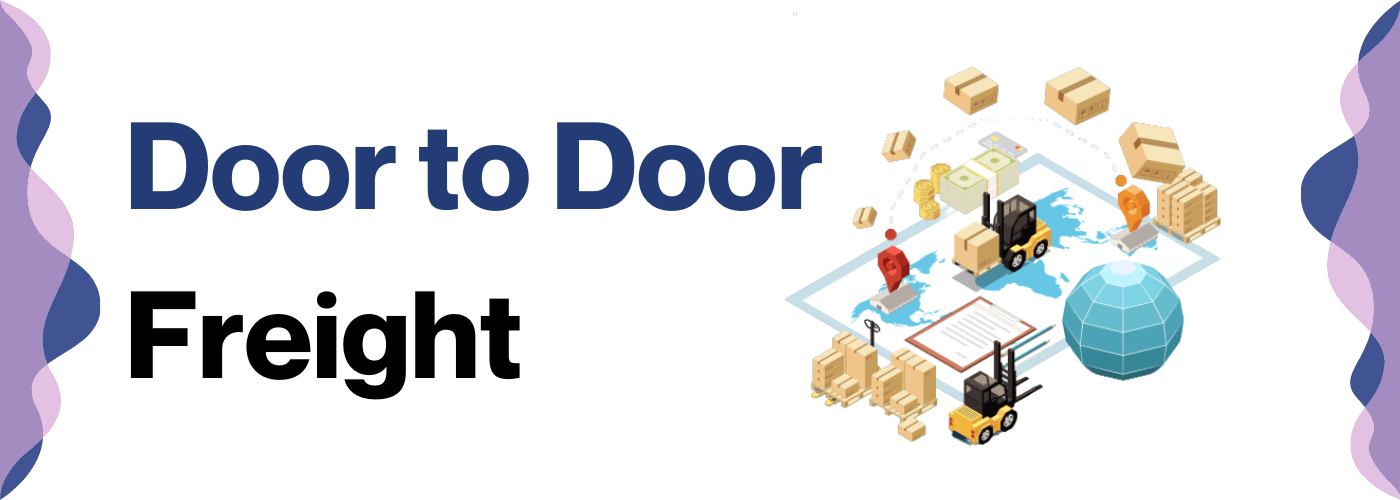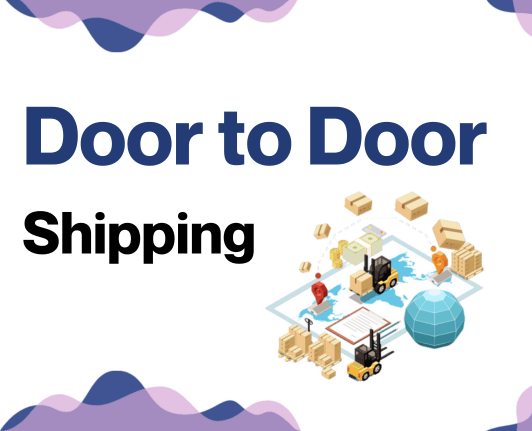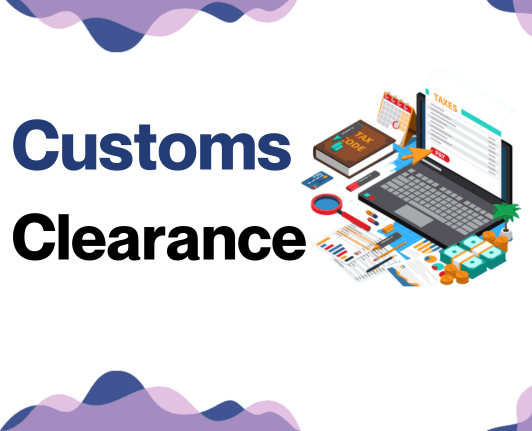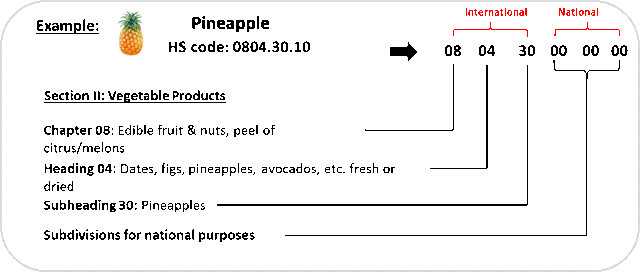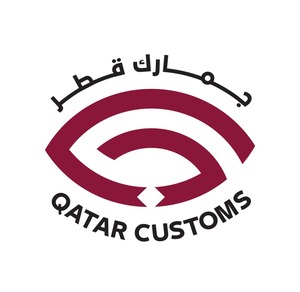Who knew shipping goods from Qatar to Belgium could feel like navigating a camel through a waffle shop? Between unraveling rates, transit times, and complex customs regulations, the task indeed seems daunting. However, no need to fret! This guide aims to educate businesses about various freight options, whether it be via air, sea, road, or rail.
We'll delve into the intricacies of customs clearance, duties, taxes, and offer pragmatic advice to ensure your business sails (or flies, drives, or rides) smoothly through the logistics process. The guide intends to simplify this vast subject and shed light on every important aspect of international shipping. If the process still feels overwhelming, let DocShipper handle it for you! As an acclaimed international freight forwarder, we transform these daunting challenges into successful pursuits, ensuring your goods reach their destination efficiently and effectively.
Which are the different modes of transportation between Qatar and Belgium?
Thoughtfully planning your route from Qatar to Belgium? Distance and borders are vital players here - like deciding to swim or drive for your summer trip. With land and sea posing significant challenges, air freight comes to the rescue, soaring majestically like a bird across the globe. Or, maybe you'd fancy container shipping, a slow yet steady tortoise, crossing oceans at a pace suited best for large, heavy cargo. Wouldn't it feel like choosing the perfect vehicle for a family vacation? The key is aligning with your precise shipping needs and overcoming any hurdles these locations might throw. Your ideal transport method awaits your decision!
How can DocShipper help?
Need to ship goods from Qatar to Belgium? DocShipper can make it a breeze! We handle everything - from secure transportation to swift customs clearance, saving you time and stress. Want a free estimate in under 24 hours? Have questions? Simply call our consultants. We're here to help!
DocShipper Tip: Sea freight might be the best solution for you if:
- You're dealing with hefty quantities or large-scale goods. Sea freight is your go-to for maximizing space without stretching your budget.
- Your cargo doesn't have an urgent deadline, as sea freight typically has longer transit times compared to air or rail.
- Your shipping routes are between major ports, allowing you to leverage the extensive global network of sea shipping lanes.
Sea freight between Qatar and Belgium
When heavy, bulk shipments from Qatar's booming oil and gas sector journey to Belgium's thriving industrial landscapes, sea routes from Hamad Port to the Port of Antwerp become their lifeline. This formidable trade partnership utilizes the cost-effectiveness and large capacity of ocean freight, despite being the slowest method.
Yet, this path can often resemble an intricate maze for many businesses. Missteps become common with complex customs clearance policies and paperwork, often leading to delayed deliveries and undervalued client satisfaction. This guide zeros in on those pain points, charting a course through the prevalent challenges of shipping between these two maritime powerhouses. Dissecting best practices and providing clear insights, it's a lantern to light your way. Think of this as your compass in the sea of international freight, transforming stumbling blocks into stepping stones for your venture. Embrace this guide and never miss a step in your ocean freight journey again.
Main shipping ports in Qatar
Hamad Port
Location and Volume: Located on the south-east coast of the State of Qatar, Hamad Port is a significant gateway to world trade and Qatar's largest port, with a shipping volume of over 2 million TEU each year.
Key Trading Partners and Strategic Importance: Key trading partners include countries from Southeast Asia like India and China, and the European Union. The port also acts as a crucial conduit for regional trade, making it strategically important for the Gulf region.
Context for Businesses: If you're looking to expand your trade in the Middle East, Hamad Port could be crucial in achieving this. Its facilities, including large container terminals, could enable efficient management of your goods. To enhance your supply chain strategy, tapping into the port's extensive shipping services could prove beneficial.
Ras Laffan Industrial City
Location and Volume: Ras Laffan Industrial City, positioned to the North of Qatar along its coast, is another vital port dedicated to the production and export of liquefied natural gas (LNG) and gas-to-liquid (GTL) products.
Key Trading Partners and Strategic Importance: The port is an integral part of natural gas industries given the heavy investments made and its collaborations with various multinational energy corporations.
Context for Businesses: If your business is involved with energy resources, particularly LNG or GTL, Ras Laffan will provide crucial access to these markets.
Doha Port
Location and Volume: Located in the centre of Qatar's east coast, Doha Port serves mainly as a hub for coastal shipping with neighboring Arab countries. It handles less volume compared to Ras Laffan and Hamad, focusing primarily on cruise operations.
Key Trading Partners and Strategic Importance: The Port has strong ties primarily with regional Arab partners.
Context for Businesses: If your business operates within the tourism industry, Doha Port's focus on cruise operations may be suitable for your shipping strategy.
Qatar is not exactly a hub for diverse sea trade routes due to its geographical location and reliance on hydrocarbon resources. However, these ports provide strategic and operational advantages for various kinds of businesses looking to participate in trade with Qatar and the broader Gulf region.
Main shipping ports in Belgium
Port of Antwerp
Location and Volume: Located in Antwerp, this port is the second-largest in Europe and ranks 16th globally for container shipping volume, handling about 11.1 million TEUs yearly.
Key Trading Partners and Strategic Importance: The port's main trading partners include Germany, Netherlands, France, UK, and the USA. The port is uniquely positioned at the heart of Europe’s purchasing power, significantly boosting its strategic importance.
Context for Businesses: If you're planning on expanding your business in Europe, the Port of Antwerp, with its excellent inland navigation connections via rivers and canals, offers a strategic stepping stone.
Port of Zeebrugge
Location and Volume: This port, located in Bruges on the coast of the North Sea, handles over 2.8 million TEUs yearly, and is one of the most significant ro-ro ports in the world.
Key Trading Partners and Strategic Importance: Zeebrugge's major trading partners include the UK, Sweden, and the USA. Offering around 70 liner services to over 900 destinations, the Port of Zeebrugge is a strategic gateway that can significantly expand your reach.
Context for Businesses: If you’re looking for a flexible and well-connected port to ship automobiles or perishable goods, consider the Port of Zeebrugge. It's known for its excellent connection to all major European customers within a 500km range.
Port of Ghent
Location and Volume: Situated in Ghent, this port, now a part of Port of Antwerp-Ghent as 'North Sea Port', handles over 4 million TEUs annually.
Key Trading Partners and Strategic Importance: Ghent’s extensive connections include Russia, Brazil, and the USA, among others. The port is known for its coal, mineral oil fractions, and cereal imports, and has a large biofuel sector, underscoring its strategic importance.
Context for Businesses: If you’re part of the agri-food, paper, and pulp or biofuel industries, the Port of Ghent, with its excellent range of cargo handling facilities and its biofuel sector, could be a key component in your global supply chain.
Brussels Port
Location and Volume: Located in the city of Brussels, right at the heart of Belgium, this port oversees a shipping volume of over 1 million TEUs.
Key Trading Partners and Strategic Importance: Brussels's main partners include the Netherlands, Germany, France, and the UK. The Brussels Hoydonk Junction has greatly increased the port’s capacity and reduced unloading times, thereby solidifying its strategic value.
Context for Businesses: If your business involves the transportation of container, bulk, or general cargo, the Brussels Port could be an ideal choice due to its central location and excellent multimodal connections.
Port of Liege
Location and Volume: Located in Wallonia, Liege, this inland port handles over 21 million tons of goods annually.
Key Trading Partners and Strategic Importance: Liege’s top trading collaborators are the Netherlands, Germany, France, and Luxemburg. As the largest Belgian inland port, it strategically focuses on handling liquid and gaseous products, ores, and construction materials.
Context for Businesses: Should you be in the business of transporting construction materials, liquid, or gaseous goods, the Port of Liege, with its multimodal solutions and specialized cargo handling, could be a key logistics partner for your business.
Should I choose FCL or LCL when shipping between Qatar and Belgium?
Are you juggling between Full Container Load (FCL) and Less than Container Load (LCL) shipping options for your Belgium-Qatar freight? No worries, you're at the right place. This section unravels these sea freight mysteries, helping you comprehend their significance in cost-effectiveness, delivery timeframe, and successful shipping. By the end, you'll be equipped with the knowledge to tailor your shipping decision to the T. Happy sailing ahead!
LCL: Less than Container Load
Definition: LCL (Less than Container Load) shipping refers to instances where your cargo does not fill up an entire container. Instead, your goods share space with other consignments heading in the same direction.
When to Use: LCL is often the most economically and logistically sensible option if your cargo measures less than 13-15 CBMs (cubic meters). It offers greater flexibility and cost-effectiveness for handling smaller shipments.
Example: Suppose you're a Doha-based manufacturer that has received an order for 10 CBM of products from a store in Brussels. Instead of bearing the unnecessary cost of a full container, you can use LCL shipping and share the container with other businesses shipping goods to Belgium, minimizing your expenses.
Cost Implications: By choosing LCL shipping, you only pay for the space your cargo takes up in the container, rather than the entire container, hence often significantly reducing shipping costs. However, bear in mind that there may be additional costs for handling and consolidation, depending on the LCL freight forwarder. Research your LCL shipment quote carefully to understand all associated fees.
FCL: Full Container Load
Definition: FCL, or Full Container Load, refers to shipping goods in a container that is fully utilized by your cargo. It's a term used in international sea freight where exporters have enough goods to fill an entire container.
When to Use: If your cargo measures more than 13/14/15 CBM (cubic meters), choosing FCL shipping can be more cost-effective. It's also advantageous for safety as an FCL container is sealed at the origin and isn't opened until it reaches the destination, minimizing the risk of damage or loss.
Example: Let's say a Qatari manufacturing business wants to ship 20 CBM of machinery to Belgium. It would benefit from using a 20'ft FCL container to ship these goods, ensuring safety while also getting a competitive FCL shipping quote.
Cost Implications: Although the upfront cost may be higher for an FCL container, it turns out cheaper at higher volumes compared to LCL (Less than Container Load) shipping. Moreover, charges for a 20'ft container will be lesser than a 40'ft container while still providing ample space, making FCL a cost-effective choice.
Unlock hassle-free shipping
Discover a stress-free shipping experience with DocShipper, your trusted freight forwarder. Our ocean freight specialists assess vital factors like cargo size, value, and urgency to determine whether consolidation or a full container is the apt choice for your Qatar-Belgium shipping needs. We're here to maximize efficiency and minimize your costs. Ready to take control of your shipping? Contact us now for your free estimate!
How long does sea freight take between Qatar and Belgium?
Shipping goods by sea freight between Qatar and Belgium typically takes an average of 30-40 days. However, keep in mind that the transit time can vary based upon certain parameters, including the specific ports of departure and arrival, the weight and nature of the cargo, and even the time of year. These peculiarities may demand different logistics operations, potentially extending the transit time. For a clear picture tailored to your specific needs, it is highly recommended to seek a precise quote from an experienced freight forwarder like DocShipper.
For your reference, here's a comparison of average transit times between the main freight ports in Qatar and Belgium:
| Qatar (Ports) | Belgium (Ports) | Average Transit Time (Days) |
| Hamad Port | Port of Antwerp | 53 |
| Ras Laffan | Port of Antwerp | 37 |
*Please note that these are average times and that the actual transit time might differ.
How much does it cost to ship a container between Qatar and Belgium?
Shipping costs from Qatar to Belgium can span a broad range per CBM. However, pinning down an exact figure is tricky due to a buffet of variables. Factors like the Point of Loading, Point of Destination, chosen carrier, nature of the goods, and monthly market fluctuations can cause rates to fluctuate. Don't be floored - our shipping specialists are experts at tailoring ocean freight rates to your specific needs. Every quote is bespoke, crafted case-by-case to ensure you secure the best possible shipping cost. So, no matter your shipping requirements, we're here, ready to delve into the details and work alongside you.
Special transportation services
Out of Gauge (OOG) Container
Definition: An OOG container, or Out of Gauge container, is designed for cargo that is too big to fit traditional containers. This could mean cargo that is too wide, inconsistent in shape, or extra heavy.
Suitable for: OOG containers are ideal for transporting large, heavy equipment or machinery, significant industrial components, and similarly oversized goods that can't fit in standard containers.
Examples: Typical items that might be considered Out of gauge cargo include large machinery parts, heavy industrial equipment, wind turbine blades, or construction materials.
Why it might be the best choice for you: If you're a business dealing with oversized or bulky cargo that can't be broken down or packed into a regular container, an OOG container could be just the right fit to secure and streamline your shipping processes.
Break Bulk
Definition: Break Bulk is a shipping method where goods are loaded individually instead of in containers.
Suitable for: Break Bulk is often the best option for types of cargo that are too large or heavy for containers and aren't suitable for bulk carriers due to size or shape.
Examples: This might include goods like construction equipment, manufacturing parts, or timber logs, which are generally loaded onto the vessel using cranes.
Why it might be the best choice for you: If you're regularly shipping large pieces of equipment that can't be split into smaller loads, or high-volume shipments that need to be craned on and off a vessel, break bulk shipping could be your ideal solution.
Dry Bulk
Definition: Dry Bulk refers to the shipment of loose cargo load, generally poured straight into the ship's hold.
Suitable for: Businesses dealing with non-packaged goods such as grain, coal, ore, and cement.
Examples: A company exporting vast quantities of grain or coal would benefit from Dry Bulk shipping, as these commodities are shipped at a huge scale directly in the cargo hold of the vessel.
Why it might be the best choice for you: If your business deals with large amounts of loose cargo goods and you're in need of a cost-effective way to transport this cargo, Dry Bulk shipping may be the most efficient way to do it.
Roll-on/Roll-off (Ro-Ro)
Definition: Roll-on/Roll-off, also known as Ro-Ro, is a shipping method that involves vehicles being driven onto a ro-ro vessel and securely stowed for transport.
Suitable for: Ro-Ro is perfect for self-propelled, wheeled cargo such as cars, trucks, semi-trailers, trailers, and railroad cars.
Examples: If you're an automobile dealer exporting various models of vehicles from Qatar to Belgium, the Ro-Ro option might be your preferred choice.
Why it might be the best choice for you: If you're exporting vehicles or any other wheeled cargo and need a quick and effective way to ship them overseas, Ro-Ro offers a hassle-free approach to shipping.
Reefer Containers
Definition: Reefer containers are specially designed refrigerated containers used to transport temperature-sensitive cargo.
Suitable for: Businesses dealing with perishable goods such as fruits, vegetables, dairy products, meats, pharmaceuticals, and other goods requiring temperature-controlled environments.
Examples: A pharmaceutical company shipping sensitive drugs or a food company exporting fresh produce between Qatar and Belgium will find reefer containers crucial to maintain the integrity of their goods.
Why it might be the best choice for you: If temperature control is a critical element for your goods, whether to keep them frozen or simply to avoid heat, a reefer container can provide the necessary environment during the duration of the shipping journey.
With all these options available, it's crucial to partner with a freight forwarding expert like DocShipper when planning your sea freight shipping between Qatar and Belgium. Feel free to reach out to us for a free shipping quote in less than 24 hours. We'll guide you to select the most efficient and cost-effective shipping method for your specific business needs.
DocShipper Tip: Air freight might be the best solution for you if:
- You're up against the clock or have a non-negotiable delivery date. Air freight is your fastest bet for meeting tight timelines.
- Your shipment is on the smaller side, falling below 2 CBM. Air freight is particularly well-suited for compact cargo loads.
- Your goods are destined for locations that aren't well-served by maritime or rail options. Air freight expands your reach by connecting you to a vast array of international airports.
Air freight between Qatar and Belgium
Air freight between Qatar and Belgium is like a sprinter - swift and reliable. Ideal for those compact, high-value items - think electronics, pharmaceuticals, or fashion apparel. Though the up-front price may seem steep, the real savings are hidden in the speed. Your goods reach their destination in a matter of days, not weeks, reducing holding costs and potentially improving cash flow.
But here's the tricky part - many businesses stumble when determining air freight costs. It's not a straight race; it's like an obstacle course where you must dodge overspending traps. Whether it's incorrectly determining the weight of your shipment or not being aware of cost-saving tricks, lacking expertise can be expensive. Stick around as we run you through common mistakes and valuable insights in this guide.
Air Cargo vs Express Air Freight: How should I ship?
Understanding what to choose – Air Cargo or Express Air Freight from Qatar to Belgium – can have a big impact on your bottom line. The difference? Air Cargo travels in the belly of commercial airliners, while Express Air Freight gets VIP treatment on a dedicated plane, speeding up delivery no end. Ready to dive in and make the best choice for your business? Let's go!
Should I choose Air Cargo between Qatar and Belgium?
Opting for air cargo between Qatar and Belgium could be a suitable selection, particularly from 100/150 kg (220/330 lbs) onwards. Airlines such as Qatar Airways and Brussels Airlines are well-positioned to support your cross-continental shipping needs. Despite longer transit times due to fixed schedules, this option offers a reliable, cost-effective solution. So, if affordability and reliability are key to your shipping strategy, air cargo might just fit the bill.
Should I choose Express Air Freight between Qatar and Belgium?
Express air freight is a specialized, speedy solution ideal for your shipments not exceeding 1 CBM or 100/150 kg (220/330 lbs). Using dedicated cargo planes without passengers, this service, offered by global couriers like FedEx, UPS, or DHL, ensures swift, secure delivery of goods. If your cargo is time-sensitive or compact, choosing express air freight between Qatar and Belgium can be absolutely advantageous. Not only does it offer faster transit times, but it also provides intensive tracking, offering peace of mind that your goods are in safe hands. Compared to traditional shipping methods, it streamlines your logistics process, making it a strong contender for your shipping needs.
Main international airports in Qatar
Hamad International Airport
Cargo Volume: Handling over 2 million tonnes of cargo annually, Hamad International Airport handles a considerable volume of Qatar's air cargo.
Key Trading Partners: The airport has strong ties with many countries around the globe, including the USA, China, the UAE, and India, leading to a highly interconnected cargo network.
Strategic Importance: Being Qatar's main air cargo hub and only international cargo airport, Hamad International Airport plays a crucial role in the country's trade and logistics sector due to its state-of-the-art facilities.
Notable Features: The airport's Cargo Terminal Complex is equipped with a fully automated storage and retrieval system, keeping your goods in safe and efficient hands, while its Cargo Terminal includes live animal facilities and temperature-controlled areas for perishable goods.
For Your Business: Relying on Hamad International for your air cargo needs can offer you access to a broad range of destinations and a well-functioning infrastructure. Its strategic location in the Middle East provides businesses with immense opportunities for broader market access to the East and the West.
Main international airports in Belgium
Brussels Airport
Cargo Volume: Roughly 1.6 million tonnes of cargo per year, making it one of the largest cargo hubs in Europe.
Key Trading Partners: Brussels Airport holds a strategic location that serves a broad spectrum of trading partners ranging from Europe, USA, China, India, and the Middle East, thus facilitating world trade.
Strategic Importance: Brussels Airport offers state-of-the-art facilities for effective cargo transport and forms a vital link making the European Union more accessible to the rest of the world. It also serves as a hub for several major cargo airlines including DHL Aviation and Singapore Cargo.
Notable Features: The airport is fully equipped with temperature-controlled facilities, making it suitable for the transport of pharmaceuticals and perishable goods. Additionally, e-freight initiatives at Brussels Airport promote paperless and swift custom processes.
For Your Business: Whether you're shipping perishable goods or heavy machinery, Brussels Airport provides reliable and efficient freight solutions. With access to a significant number of worldwide destinations and direct freeway access, it’s worth considering for your international shipping needs.
Liege Airport
Cargo Volume: Per year, Liege Airport handles over 902,480 tonnes of cargo, making it the 7th busiest cargo airport in Europe.
Key Trading Partners: Liege primarily caters to the European Market but also has strong links with Africa, North America, and Asia.
Strategic Importance: Liege Airport, located near the German and Dutch borders, makes it an ideal location for businesses that are focused on the European market. It primarily serves cargo airlines such as Qatar Cargo, Ethiopian Cargo, and ASL Airlines Belgium.
Notable Features: The airport operates 24/7 without any noise restrictions, allowing for continuous cargo operations. It also offers specialized infrastructure for the transportation of live animals and temperature-sensitive goods.
For Your Business: If your business operates on tight schedules or requires night-time shipments, Liege Airport with its 24/7 operation can be an ideal choice. Its strategic location and direct motorway access to Germany, France, and the Netherlands can also facilitate accelerated delivery times within the European market.
How long does air freight take between Qatar and Belgium?
Shuffling goods from Qatar to Belgium via air freight typically takes around 3-5 business days. However, it's essential to remember that the exact duration can change depending on variables such as specific departure and arrival airports, the weight of the goods, and the type of goods being transported. Need precise timings? Rely on a reputable freight forwarder, like DocShipper, to provide accurate, up-to-the-minute information.
How much does it cost to ship a parcel between Qatar and Belgium with air freight?
Transporting an air freight parcel from Qatar to Belgium can range broadly, averaging between $3 to $10 per kg. These rates, however, are subject to factors such as distance from the airport, parcel dimensions, weight, and nature of goods, which all impact the final costs. As every shipment is unique, we tailor our quotes to meet exact requirements and ensure the best possible value. Our team is poised to work closely with you and provide an accurate quote within 24 hours. Connect with us today to obtain a free, no-obligation quote.
What is the difference between volumetric and gross weight?
In air freight shipping, 'Gross Weight' refers to the total weight of your shipment, including packaging and pallets, whereas 'Volumetric Weight' assesses the space your cargo occupies in the aircraft.
Calculating these two weights involves distinct methods.
For Gross Weight, it is straightforward - simply weigh your entire shipment and note down the weight. For example, if your shipment, with its packaging and pallets, weighs 100 kg, that is your gross weight (equivalent to approximately 220 lbs).
Calculating Volumetric Weight is a bit more complex. In Air cargo, multiply your shipment's dimensions (Length x Width x Height in centimeters) and divide this by 6,000 to get the volumetric weight in kg.
So, if your box is 40cm long, 30cm wide, and 50cm high, your volumetric weight would be 403050/6000 which equals approximately 10 kg (about 22 lbs).
Express Air Freight services use a slightly different factor. They divide the total cubic centimeters by 5,000 instead. Applying this to our previous example, the volumetric weight becomes 12 kg (approximately 26.5 lbs).
Now, why does this matter? Freight charges are determined by comparing the gross weight and the volumetric weight - you are billed on whichever is higher. Therefore, understanding these calculations ensures cost-effectiveness in your cargo shipments.
DocShipper tip: Door to Door might be the best solution for you if:
- You prioritize a smooth, hassle-free shipping experience from start to finish. Door-to-door services manage the entire journey, from initial collection to ultimate delivery.
- You appreciate streamlined communication and would rather deal with one person. A dedicated agent is usually assigned to oversee every detail of your door-to-door shipment.
- You want limit the number of touchpoints for your cargo. Door-to-door services reduce the frequency of transitions between various transport methods, thereby lowering the likelihood of damage or loss.
Door to door between Qatar and Belgium
Navigating the world of international shipping can sometimes feel like a high-stakes maze. But with Door to Door shipping, we can take those worries off the table. It's an all-inclusive service that covers the journey from Qatar's bustling hub to Belgium's vibrant towns, streamlining customs and transportation for seamless delivery. This option offers convenience and efficiency, rolled into one. Intrigued? Well, let's dive in.
Overview – Door to Door
Managing logistics between Qatar and Belgium can seem like a labyrinth. A prime solution? Door to door shipping! Popular among DocShipper's clients, this service provides a stress-free logistics answer to your complex challenges. You'll experience seamless, complete coordination, from your warehouse in Qatar right to Belgium's doorstep. This convenience does, however, come with a higher cost - the price of enjoying an effortless, efficiently-managed process. If you value simplicity and peace of mind, despite the financial aspect, door to door shipping might be your optimum choice, resolving concerns of intricate shipping and customs processes. Dare to simplify, dare to ship door to door!
Why should I use a Door to Door service between Qatar and Belgium?
Ever squirmed at the thought of organizing a majestic camel race, only to remember that you're in the logistics game, not event planning? Door to Door service might just be your oasis in the desert of shipping, particularly between Qatar and Belgium. Here's why:
1. Stress Alleviator: Door to Door takes the entire shipping process off your plate, right from picking up your goods from the origination point to delivering at the final destination. So you can avoid the logistics labyrinth and focus on your core business activities.
2. Time Saver: In the race against time with urgent shipments, this service ensures your cargos carrot-dangle swiftly past the paperwork hoops. Our network of reliable carriers assures timely pickup and delivery, meaning your goods reach their destination while still hot on the market.
3. Specialized Handle with Care: Complex cargo can resemble a complicated Rubik's cube. However, our experts handle your fragile or complex goods with knowledgeable care, ensuring they reach in one, neat cube.
4. Convenience: Imagine if your goods had a personal chauffeur? The Door to Door service is pretty much just that! Handling everything from customs to trucking until the final destination, your shipments get red-carpet treatment, minus the paparazzi.
5. Tracking & Support: With real-time tracking, stay connected with your shipment journey, knowing exactly where your goods are. Plus, our support team is always on standby, should you have any queries or issues.
Grab a cup of Arabica coffee, and let the Door to Door service take the reins of your Belgium-Qatar connection, delivering your goods faster than a falcon's flight!
DocShipper – Door to Door specialist between Qatar and Belgium
Experience seamless, door to door shipping from Qatar to Belgium with DocShipper. Leave the complexities to us and enjoy a stress-free service from packing to customs clearance. Our dedicated team of experts navigate all transport modes, ensuring your shipment reaches its destination safely. Your dedicated Account Executive is always ready to assist, providing swift, personalized solutions. Don’t delay - get a free quote within 24 hours, or reach out to our consultants for a complimentary discussion. Your peace of mind is our priority. Let us handle your shipping, while you focus on growing your business.
Customs clearance in Belgium for goods imported from Qatar
Customs clearance is the necessary process in which goods imported from one country are formally entered into another country. This crucial step in international shipping into Belgium from Qatar can be rather intricate and daunting. Navigating customs can feel like stumbling through a minefield of unexpected fees and charges. Coming prepared with a deep understanding of customs duties, taxes, quotas, and licenses is key to avoid your goods being held up at the docks. Attaining this learning can prevent potential financial surprises and shipping delays.
The subsequent sections are here to guide your comprehension of these terms and prevent such obstacles. Furthermore, DocShipper is at your service to assist with any types of goods anywhere in the world. Need a project cost estimate? Just provide the origin of your goods, the value, and the HS Code, and our passionate team will guide you from there.
How to calculate duties & taxes when importing from Qatar to Belgium?
Strolling through the maze of calculating customs duties can seem daunting, but no worries, we're here to pave the way for you. First off, let's debunk the factors involved in this numerical puzzle. The country of origin, the Harmonised System (HS) code, the Customs Value, your product's Applicable Tariff Rate, and other sundry taxes and fees applied all play their parts in forming the total duty and tax amount. Now with our compass set, let’s embark on the first leg of our journey - identifying the precise country where your goods were born, the place of their manufacture or production. This anchor point shapes the rest of our duty and tax estimation.
Step 1 - Identify the Country of Origin
Knowing your goods' Country of Origin isn't as obvious as it seems! Five reasons highlight its importance:
First, the Country of Origin determines the correct Harmonized System (HS) code, which directly impacts duty rates.
Second, trade agreements sway duty rates significantly. For instance, the European Union (EU) has a Generalized Scheme of Preferences (GSP) with Qatar, which reduces or eliminates duties based on the good's origin.
Third, import restrictions vary by origin. For example, certain goods, including live animals or pearls, face special restrictions when imported into Belgium from Qatar. It's crucial to know these in advance.
Fourth, non-tariff barriers such as quotas, embargoes, or technical barriers hinge on the origin. Finally, country-specific trade statistics provide insight into market trends and competition.
So to ensure smooth shipping from Qatar to Belgium, always start by identifying the Country of Origin. This step not only sets the groundwork for obtaining an accurate HS code but also guides you through various duty rates, restrictions, and potential market opportunities. Practical and beneficial, right? Remember, knowledge is power in international freight!
Step 2 - Find the HS Code of your product
The Harmonized System (HS) Code is a standardized numerical method of classifying traded products. This system is used by customs authorities around the world to identify products when assessing duties and taxes and for gathering statistics. If you're an importer or exporter, having the correct HS Code for your product is crucial.
Frequently, the most straightforward way to discover your product's HS Code is to inquire with your supplier. Being deeply knowledgeable about their goods, they should easily provide the HS code conforming to the regulations imposed on their products.
However, in the event that this information isn't readily available, we will guide you through a simple way to determine it yourself. The first step involves using an HS lookup tool, like the Harmonized Tariff Schedule. After opening the link, input your product name into the search bar. Then, refer to the Heading/Subheading column to locate your HS Code.
Please note that ensuring the accuracy of the HS Code is crucial. Misclassifications can lead to shipment delays and could even incur fines. Eradicating any ambiguity in your product classification is a key step in achieving a smooth and efficient customs clearance process.
Following our guideline, you should effortlessly and correctly identify your HS Code. And, to make this process even more clear-cut, here's an infographic showing you how to read an HS code. Leveraging this visual aid will help you deepen your understanding and make the decoding process simpler.
Step 3 - Calculate the Customs Value
Diving straight in, customs value isn't just about the price tag on your goods. It's more complex, envisioned to cover all costs related to your shipment from Qatar to Belgium right up to the point it crosses the Belgian border. For example, if your goods cost $10,000, the international shipping charges are $2,000 and the insurance — let's say it's $300, then the Customs Value, which is also known as CIF value (Cost, Insurance, Freight), equals to $12,300. This is the value you'll provide to Belgian customs for calculating duties and taxes. Remember, precision is key here because any inaccuracies can lead to expensive adjustments and delays.
Step 4 - Figure out the applicable Import Tariff
An import tariff is a tax imposed by a country on goods imported from another country. The purpose of an import tariff is often to control the flow of goods, protect domestic industries, and generate revenue.
In the case of shipping goods from Qatar to Belgium, you'll need to identify the relevant tariff using the TARIC System - European Customs tool. This is because Belgium is a member of the EU, which uses a common customs tariff system known as the TARIC (Integrated Tariff of the European Communities).
Here's what you have to do:
1. Input the previously identified Harmonized System (HS) code and designate Qatar as the country of origin in the tool.
2. Examine the duties and taxes that apply to your product.
Now, let's illustrate this with an example. Let's assume you're importing plastic tableware with the HS code 3924.10 from Qatar. Input this in the TARIC system. Let's say the system provides a tariff rate of 6.5%.
Now, to calculate the import duties, you'd consider the Cost, Insurance, and Freight (CIF) value of your shipment. Let's say the CIF cost is $10,000. The import duty you'd have to pay would be the tariff rate (6.5%) multiplied by the CIF value, which amounts to $650.
Remember, the exact calculation may depend on several factors, and this is just an example to guide you. Ensure to cross-check every detail to abide by customs regulations and make the process as smooth as possible.
Step 5 - Consider other Import Duties and Taxes
When transporting goods from Qatar to Belgium, it's essential to know that besides the standard tariff rate, there can be additional import duties depending on the product and its origin. Let's break it down:
1. Excise Duty: Primarily applied to alcohol, tobacco, or energy products. For instance, a batch of Qatari-imported cigarettes might attract an extra duty.
2. Anti-dumping Taxes: If goods are sold far below their normal value, additional taxes may apply. Let's say you're importing steel at an unusually low price from Qatar; it could be subject to anti-dumping taxes.
3. Value Added Tax (VAT): This is the elephant in the room. It's unavoidable and applied to the total amount of duties plus the value of the goods. For instance, if your goods (cost, insurance, freight) are worth $1000 and you paid $100 in duties, the VAT would apply to $1100.
Please note, these are illustrative figures, and actual rates vary. Make sure to always cross-check with the latest customs regulations. Remember, understanding your potential costs upfront will save you from any unforeseen surprises. Happy shipping!
Step 6 - Calculate the Customs Duties
Calculating customs duties when importing goods from Qatar to Belgium involves several important factors, including the customs value, VAT, and possibly anti-dumping taxes and excise duty. It's essential to get this calculation right to avoid overpaying on charges and keeping the whole process economical.
Consider three scenarios:
1) Customs duties only: If you're shipping valuables worth $2000, with a duty rate of 5%, you'll pay $100 in customs duty.
2) Customs duties and VAT: Goods valued at $5000, with a duty rate of 10% and VAT on the import at 21%, will see charges of $500 in customs duties, and $1050 in VAT. Your total liability would be $1,550.
3) Customs duties, VAT, and anti-dumping taxes: A shipment valued at $10000, carrying 15% duty, 21% VAT, 10% anti-dumping tax, and an excise duty of 5% would result in $1,500 as customs duties, $2,100 in VAT, $1,000 in anti-dumping tax, and $500 as an excise duty. You'll owe $5,100 here.
Remember, these calculations can quickly get complex and any missteps can result in costly overpayments. DocShipper is here to the rescue, taking care of every step of the customs clearance process anywhere in the world, ensuring you won't get overcharged. Reach out to us for a free quote within just 24 hours, and let us streamline your international shipping logistics.
Does DocShipper charge customs fees?
While DocShipper operates as a customs broker in Qatar and Belgium, it doesn't levy any customs duties. You might notice separate costs on your end as we handle customs clearance for you, but fear not! This fee is distinct and goes directly towards facilitating your smooth shipping process. Duties and taxes are outside our control and paid straight to the governing bodies. Each charge will be meticulously detailed, and official documents from customs will be provided, ensuring you pay what's rightly due, nothing more. It's a transparent, fair process, with the aim of simplifying your international shipping ventures.
Contact Details for Customs Authorities
Qatar Customs
Official name: General Authority of Customs - Qatar
Official website: www.customs.gov.qa/
Belgium Customs
Official name: Belgium General Administration of Customs and Excise
Official website: finance.belgium.be/en/
Required documents for customs clearance
Ensuring a smooth shipping process can feel daunting, especially when it comes to paperwork. Let's unravel the mystery of key documents like the Bill of Lading, Packing List, Certificate of Origin, and Documents of conformity (CE standard) - all vital for breezing through customs clearance. Understanding these documents will help reduce headaches and unexpected hurdles on your shipping journey.
Bill of Lading
Navigating the world of international freight, the Bill of Lading (BOL) is your knight in shining armor. In your shipping journey from Qatar to Belgium, consider the BOL as your passport - it denotes the shift in cargo ownership from you to your buyer. Lost in the sea of paperwork? Go digital with electronic telex releases. They bring a new level of accessibility - namely, cutting down on time and paperwork, easy retrieval, and reducing chances of losing this crucial document.
For your air cargo needs, consider the Airway Bill (AWB), identical to the BOL but in the aviation sphere. Remember, preparing your BOL meticulously can prevent shipment delays, keeping your business running smoothly and your buyers happy!
Packing List
When shipping goods from Qatar to Belgium, one document you can't afford to overlook is the Packing List. Think of it as an elaborate inventory of your shipment—detailing item descriptions, quantities, weights, and packaging types. As a shipper, it's up to you to ensure this document is accurate, complete, and undeniably clear. Any discrepancies can cause unnecessary delays and extra costs, regardless of whether you're using sea or air freight.
Consider the case of an exporter shipping a variety of machine parts; without a specific, itemized packing list, customs officers wouldn't be able to properly verify the shipment's contents, risking confusion and hold-ups at the border.
Remember, this isn't just paperwork—it's peace of mind. You're laying a straightforward path for your goods to smoothly pass customs clearance, motor along the motorways of Belgium, or fly seamlessly through its airspace. So, take the time to make your Packing List right—it's your route to successful shipping.
Commercial Invoice
Brace yourself for a smooth customs clearance between Qatar and Belgium with a properly prepared Commercial Invoice. This document is your shipment's passport, detailing key information like product description, payment terms, unit costs, and total values in both Qatari Riyal and Euro. Remember, this isn't just a billing affair, but an essential document for customs valuation. Misaligned information across shipping documents can lead to delays. So, be diligent, making sure that all details match up with your Declaration or Bill of Lading.
For instance, if you're shipping machinery parts worth €5,000, bungle-free transactions are when the 'machinery parts' on your Commercial Invoice mirror what's in your shipping documents, and the declared value matches to the last cent. Nailing these nuances will streamline your customs clearance, saving you valuable time and money. Now tackle those shipping challenges head-on with confidence in every step.
Certificate of Origin
Navigating international trade between Qatar and Belgium? A Certificate of Origin (CoO) is your best friend. It's the official document that attests to a product's origin country, the place where all significant manufacturing occurred. Importantly, it holds the key to unlocking preferential customs duty rates under various trade agreements. Picture this: you're shipping auto parts produced in Qatar to Belgium. By providing a CoO indicating that these parts are 'Made in Qatar', you may score a lower duty rate. Therefore, never overlook this powerful instrument, as it could save you substantial bucks in your Belgium-Qatar freight journey.
Certificate of Conformity (CE standard)
If you're shipping goods from Qatar to Belgium, you need to know about the Certificate of Conformity (CE standard). It's a vital document that verifies your product conforms to all legal requirements in the European market, which notably includes Belgium. This is not to be confused with quality assurance—it doesn't automatically mean your goods are top-quality, but that they meet safety, health, and environmental protection standards. It's similar to US standards like the FCC Declaration of Conformity but intended for Europe. Now, how is this relevant for you? Well, if you fail to provide this document, your shipment can be delayed or even denied entry into Belgium. So, before shipment, ensure your goods have gone through the necessary tests and inspections to get this certification. It keeps your goods on the move and your customers happy.
Your EORI number (Economic Operator Registration Identification)
If you're shipping goods between Qatar and Belgium, the EORI Number (Economic Operator Registration Identification) becomes your key to smooth customs clearance. Acting as your business's unique identifier within EU's commercial landscape, it tracks all your import-export activities. No EORI? Expect hiccups during customs. Applying is straightforward - you can register online on the EU's official portal.
Once you receive your unique EORI number, every shipment in and out of Belgium is recorded under this umbrella, ensuring transparency and streamlining customs procedures. For example, imagine you're shipping a batch of premium Qatari dates to Brussels - your EORI links you, the dates, and their EU journey, making the process more efficient for everyone involved. Understand that an EORI isn't optional - it's a must-have for your import-export success story.
Get Started with DocShipper
Navigating customs clearance can be tricky. Don't let complex procedures and paperwork stress you out any longer. At DocShipper, we're here to handle every step, ensuring a smooth transit from Qatar to Belgium. Get in touch now. Your free quote awaits, delivered within 24 hours, streamlining your shipping process like never before.
Prohibited and Restricted items when importing into Belgium
Understanding what's off-limits when importing goods into Belgium can be a real headache. From tax implications to outright bans, these limitations change how you do business. Our guide offers valuable insights to save you from costly mistakes and potential setbacks. Let’s dive in!
Restricted Products
Here is the list for you:
- Arms, Ammunition, and Other Weapons: You have to apply for a license from the Federal Public Service Foreign Affairs Belgium.
- Pharmaceutical Instructional Substances: Obtain a permit from the Federal Agency for Medicines and Health Products.
- Certain Radioactive Products: Get a license from the Federal Agency for Nuclear Control.
- Special Chemical, Biological, and Biomedical Warfare Goods: You need approval from the Chemical, Biological, Radiological, and Nuclear (CBRN) control government.
- Certain Agricultural Products: For SGEAs (sensitive genetically engineered/agricultural products), attain a permit from the Federal Public Service Health,
- Animals and Animal Products: Permit required from the Federal Agency for the Safety of the Food Chain.
- Certain Cultural Goods: Seek authorization from the Royal Institute for Cultural Heritage.
- Trees, plants, and parts thereof: Obtain a permit from the Federal Public Service Health, Food Chain Safety and Environment.
Note: This list is not exhaustive, and the requirements might change, so it's always a good idea for businesses and individuals to check and comply with the current rules before exporting or importing goods.
Prohibited products
- Narcotics and illicit substances: This includes drugs that are not prescribed by medical professionals. Unauthorized substances are completely prohibited and their import can lead to severe legal consequences.
- Counterfeit goods and pirated items: Regardless of purpose, fake branded and pirated products are not permitted to enter Belgium under any circumstance. This includes counterfeit clothing, accessories, electronics, and pirated software or media.
- Certain types of live animals: There are strict regulations on importing exotic, rare, or endangered species into Belgium. Check with the Belgian Customs and Excise Department for specifics.
- Biological and hazardous materials: Any substance capable of causing harm to public health. This includes waste materials, infectious substances, and biohazardous materials.
- Unregistered firearms and weapons: Importing firearms, especially unregistered or illegal ones, is strictly banned.
- Indecent and offensive material: Any material that is considered obscene, promotes hate speech, or could incite violence is not allowed.
- Certain types of plants or plant material: Due to the risk of introducing foreign pests and diseases, there are restrictions on importing certain types of plants or plant materials.
Are there any trade agreements between Qatar and Belgium?
Yes, Belgium and Qatar enjoy strong bilateral trade relations but currently, there isn't a Free Trade Agreement (FTA) or Economic Partnership Agreement (EPA) in place between them. However, they continue to explore trade and investment opportunities through platforms such as the Belgian Qatari Business Council. This might indicate future agreements that could ease your shipping processes and reduce costs. It's essential to monitor these developments to take full advantage of potential future benefits for your business.
Qatar - Belgium trade and economic relationship
Dating back to the 1970s, when diplomatic relations were first established, the economic bond between Qatar and Belgium has steadily blossomed. The Belgian-Qatari Bilateral Agreement signed in 2009 catalyzed an upswing in trade volume, offering a solid foundation for further cooperation. Today, the major trading sectors include energy (particularly gas), machinery, pharmaceuticals, and precious stones/metals.
Belgium remains a significant investor in Qatar’s burgeoning industries, with direct investments surmounting to nearly $138 million. Reversely, Qatar’s stake in Belgium, amounting to around $2.3 billion, primarily extends to real estate and finance. The two nations exchanged goods worth over $634 million in 2022 alone, a testament to their robust trade relationships. Willingness to engage in dialogue and commitment to mutual development continue to propel these economic ties forward.
Your Next Step with DocShipper
Scared of the complexities of shipping between Qatar and Belgium? Put your worries aside! DocShipper takes the hassle out of the international freight. From customs to cargo, we handle it all. You focus on your business, we focus on your shipping. Ready to make your shipping process smoother? Contact us!
Additional logistics services
Dive into the depth of our full spectrum of logistics services. Beyond shipping and customs, discover how DocShipper streamlines your entire supply chain, ensuring a seamless journey for your goods.
Warehousing and storage
Finding the right warehouse can feel like a maze. It's not just about space - it's about keeping your goods in perfect condition, like temperature-sensitive Belgian chocolates. Rest easy knowing we’ve got it all sorted. Learn more to conquer the warehousing challenge on our dedicated page: Warehousing.
Packaging and repackaging
When shipping from Qatar to Belgium, the packaging and repackaging process can make all the difference. Choose a reliable agent to ensure items are packaged suitably for long-haul transport - think snug bubble wrap for delicate porcelain, resistant crates for machinery parts. Doing this prevents damage and increases your goods' chances of clearing customs swiftly, saving you time and worry. Learn more on our page: Freight packaging.
Cargo insurance
Brokering cargo insurance can be an indispensable ally, acting as a shield against unforeseen hazards, unlike fire insurance which only covers specific risks. This comprehensive cover safeguards your asset throughout the journey, offering peace of mind. Consider, for example, the security in knowing that a sudden storm or container mishap won't cut into your bottom line. It's less about expecting trouble, and more about preemptive planning. It's about turning potential major losses into manageable costs. Learn more on our dedicated page: Cargo Insurance.
Supplier Management (Sourcing)
Struggling to find reliable suppliers overseas? DocShipper eases this pain, ensuring your procurement process is smooth sailing from Asia, East Europe, and beyond. We bridge language barriers and guide you through the process. An example? You're shipping marbles from Qatar to Belgium; we'll find the marble-manufacturing maestro in Asia.
Personal effects shipping
When it comes to moving personal effects between Qatar and Belgium, trusting professionals is vital. Whether it's handling your great-grandmother's fragile vase or maneuvering your oversized vintage sofa, our team ensures each item reaches its new home safely and efficiently. Picture this: Your cherished items, handled with the same professional care as a museum curator would give priceless artifacts. With our expertise, moving bulky or fragile belongings becomes less of a headache and more of an exciting venture in your international journey.
Quality Control
Quality control is your safeguard when shipping goods from Qatar to Belgium. Imagine you're sending custom-made furniture; thorough inspections during manufacturing can prevent any non-compliance or defects. With dutiful quality control, you're protected from the nightmare of damaged goods and return shipments, keeping costs down and your Belgian customers happy. Who wants to receive a defectively crafted chair, right? Stick to the standards, and never face a situation that involves re-shipping.
Product compliance services
Product compliance is non-negotiable when going global. It's a grey area with foreign import laws, but that's where we shine. Our services include laboratory testing to ensure your goods stand up to destination regulations, securing that all-important certification. Imagine being able to ship with the confidence of a local company. Efficiency and peace of mind? Priceless.
FAQ | Freight Shipping between Qatar and Belgium | Rates - Transit times - Duties and Taxes
What is the necessary paperwork during shipping between Qatar and Belgium?
When shipping from Qatar to Belgium, there are several key documents we'll work with. As your freight forwarder, we'll manage your Bill of Lading for sea freight or Air Way Bill for air freight. Additionally, we'll need you to provide us with the packing list and the commercial invoice. These are crucial for efficient and legal transportation of your goods. It's important to note that depending on the nature of your goods, additional documents might be required such as Material Safety Data Sheets(MSDS) or specific certifications. Rest assured, we're here to guide you through these procedures every step of the way.
Do I need a customs broker while importing in Belgium?
While it's not obligatory, we at DocShipper strongly recommend using a customs broker when importing goods into Belgium. The reason is that dealing with customs authorities involves a complex procedure, requiring specific and often intricate documentation that can easily overwhelm someone not familiar with the process. As a part of our services, we act as your representative during customs clearance for most shipments, streamlining the import procedure. This way, we ensure your goods move through customs efficiently, saving you both time and effort.
Can air freight be cheaper than sea freight between Qatar and Belgium?
While it's difficult to give a blanket answer as it hinges on numerous factors such as route, weight, and volume, generally, air freight can indeed be a cost-effective option for smaller shipments. For instance, if your cargo is less than 1.5 Cubic Meters or 300 kg (about 660 lbs), air freight from Qatar to Belgium may be worth considering. Rest assured that, at DocShipper, we are committed to providing the most suitable and competitive options for your shipping needs, guided by our dedicated account executives.
Do I need to pay insurance while importing my goods to Belgium?
While it is not a requirement to insure your goods when importing them to Belgium or elsewhere, we at DocShipper strongly recommend doing so. The unpredictability of shipping operations means that incidents, including damage, loss, or theft, can occur. Therefore, securing insurance can provide a safety net to protect your financial interests during transit. By ensuring your shipment, you can minimize potential losses and provide an added layer of security for your valuable goods. Ensuring peace of mind is just as important as ensuring the efficient delivery of your goods.
What is the cheapest way to ship to Belgium from Qatar?
Considering the distance, volume, and weight factors, sea freight can be a cost-effective solution for larger shipments from Qatar to Belgium. In comparison to air freight, it takes longer but reduces shipping costs considerably. However, if time is your concern, air freight is generally faster but more expensive. It's essential to evaluate your shipment needs and budget to choose the ideal shipping method. We at DocShipper are always willing to assist you in this process.
EXW, FOB, or CIF?
Choosing between EXW, FOB, and CIF largely depends on your rapport with your supplier. While suppliers might typically deal under EXW or FOB terms, it's crucial to remember that they might not be logistics experts. Thus, deciding how to handle international freight and destination processes might best be left to a professional like us at DocShipper. Regardless of the terms decided upon, we are equipped to provide a seamless door-to-door service, ensuring your goods are transported safely and efficiently from origin to destination. Count on us to simplify your logistics processes, giving you more time to focus on your core business operations.
Goods have arrived at my port in Belgium, how do I get them delivered to the final destination?
When your goods arrive at the Belgian port, if transported under the CIF/CFR incoterms, you'll need to enlist a custom broker or freight forwarder to assist with goods clearance, pay import charges, and manage final delivery. Alternatively, we offer a comprehensive DAP service, which includes handling the entire process for you. Please discuss these options with your assigned account executive for precise details.
Does your quotation include all cost?
Absolutely, our quotation encapsulates all costs, barring duties and taxes at the destination. These aren't typically included, but feel free to request an estimate from your dedicated account executive. We at DocShipper prioritize transparency to avoid any unexpected charges for you.
